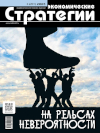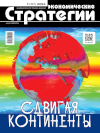Digital Twin of an Enterprise: Business Capability Maps and Artificial Intelligence in Managing Multi-Industry Ecosystems
DOI: 10.33917/es-3.201.2025.98-101
The article examines the concept of an enterprise digital twin (EDT) as an organizational and managerial mechanism based on business capabilities. Business capability is a holistic system for carrying out a specific type of activity, whose behaviour is strategically predetermined in a unique and unambiguous way within an ecosystem and its implementation is variable, including processes, organization and all types of resources. The author proposes a methodology for forming a business capability map using a federalistic approach to integrating data and artificial intelligence (AI) technologies, which ensures high adaptability and ecosystems transparency. Based on theoretical analysis and testing in real companies, practical significance of EDT for vertical and horizontal integration of corporations and, accordingly, management of multi-industry ecosystems is shown.
References:
1. Grieves M. Digital Twin: Manufacturing Excellence through Virtual Factory Replication. 2014.
2. Tao F., Zhang H., Liu A., Nee A.Y.C. Digital Twin in Industry: State-of-the-Art. 2019.
3. Ulrich D., Smallwood N. Capitalizing on Capabilities. Harvard Business Review, 2004.
4. Ross J.W., Weill P., Robertson D. Enterprise Architecture as Strategy: Creating a Foundation for Business Execution. 2006.
5. Kairouz P., McMahan H.B., Avent B., Bellet A., Bennis M., Bhagoji A.N., et al. Advances and Open Problems in Federated Learning. 2021.

















